- The first ste, turn Entites into tables and relationships follows some given patterns.
- Chapter 5 introduces the patterns
- Chapter 6 introduces the solutions.
- I really didn't like this so:
- We look for patterns with known solutions.
- A standard solution to a common problem
- Anyone solving this problem who knows the solution will konw what is happening.
- Provides a common language with which to discuss the solution/problem.
- Think for loop/stack as opposed to free style solution.
- 1:1 Strong entities
- A sports club.
- Each member is an entity.
- Each locker is an entity.
- A member may have a locker, but only one.
- They are strong.
- Each can exist without the other.
- Some members may not rent a locker.
- Some lockers may not be rented.
-
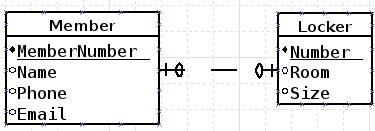
- This is solved by placing a the primary key of one table into the other table as a forein key.
- Verify that given one, we can find the other.
- The 1:1 is enforced by requiring the foreign key to be unique at the database level.
- It is listed as an alternate key, but just to document, it might be null, so it can't be a PK.
- 1:M strong
- A department within a company.
- We determine that a department must be assigned to exactaly one company
- But that a company may have many departments. (OR it may have 0)
- A department does not exist without a company.
-

- Place the primary key from the company into the department table as a foreign key.
- We really don't want the FK to be unique in this case.
- N:M strong.
- Many companies supply parts.
- Each part may be supplied by many companies.
- Each company may supply many parts.
- Each part must come from a company
- But we may deal with a company which doesn't supply parts (Shipping)
-

- Solution: Build an intersection table.
- It holds two foreign keys.
- Which are primary keys in the other two tables.
- And the combination makes up a primary key for this table.
- An Association Pattern
- look at the bottom of page 172 and 173.
- In the second report, the price is included.
- The price is really not part of the company, there are many prices for a company in that case.
- It is really not part of the part either. Again parts come from many companies.
- The price does not exist alone, thus it is a weak relationship.
- It is id dependant, as to save the price we need attributes from other entities.
-

- The solution is just like it looks.
- The same solution as above, but it includes some data.
- He points out that this is strange, such a table will NEVER appear in the company's documentation.
- This is called an association table.
- He discusses a ternary relationship as well.
- An architect's office has clients, projects and architects.
- A client may have many different assignmetns associated with a project
- An architect may be assigned to many different assignments associated with a project.
- A project may have many different assignments.
- But an assignment has only one client, architect and project.
-
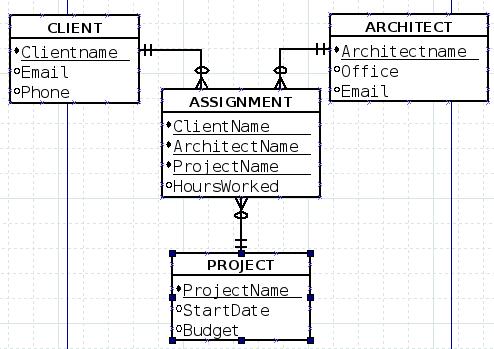
- The solution is still a table with three foreign keys and one attribute that is not.
- A Multivalued Attribute Pattern
- A company has multiple phone numbers.
- They may also have multiple contact persons.
- The phones might be in a generic bank (ie no association between phones and contacts)
-
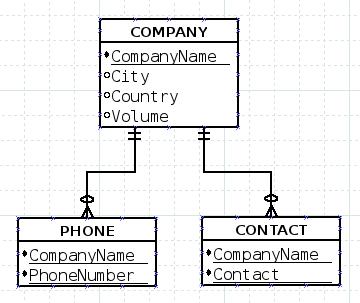
- Or each contact may have an individual phone number.
-
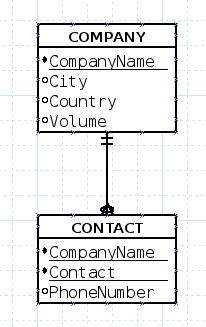
- Again, the pattern is easy, just a compound primary key, with the company name as a foreign key.
- Archtype/Instance Pattern
- A version/instance pattern.
- A course exists as a prototype.
- It has multiple instances (sections)
- In this example, there is a design for a yacht (archtype).
- Then versions (instances)of the yacht are built.
- In these cases, the primary key attribute of the archtype is/is not part of the instance. (Depending on design)
- Read the discussion about this on page 179.
-
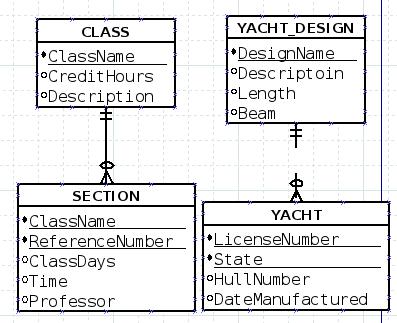
- In either case, the Primary key from the archtype is a foreign key in the instance.
- For a strong relation, it is an alternate key
- For a weak relation, it is part of a composit primary key.







